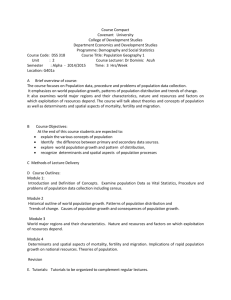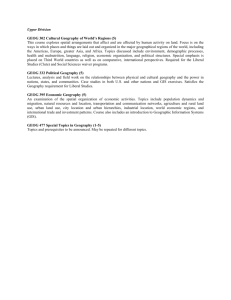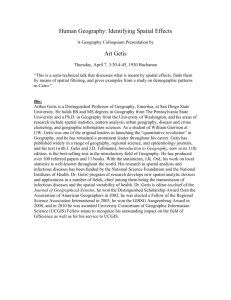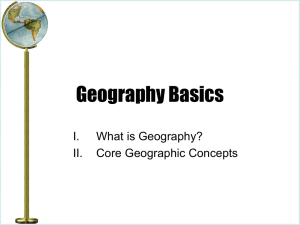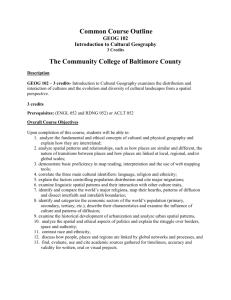Economic Geography
advertisement
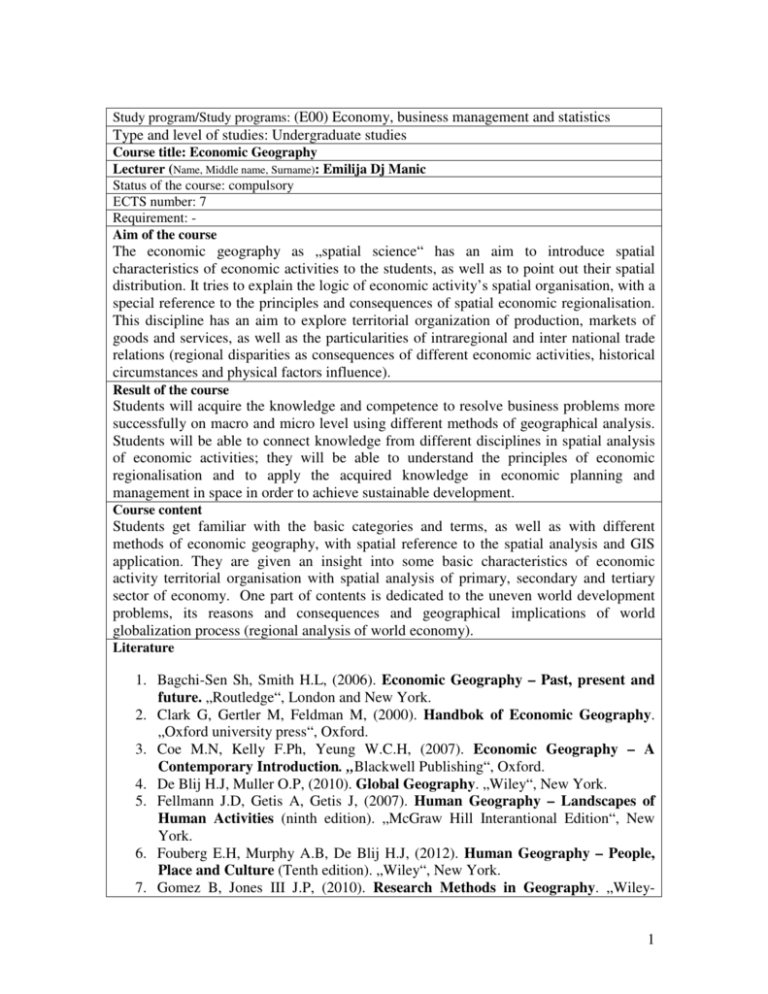
Study program/Study programs: (E00) Economy, business management and statistics Type and level of studies: Undergraduate studies Course title: Economic Geography Lecturer (Name, Middle name, Surname): Emilija Dj Manic Status of the course: compulsory ЕСTS number: 7 Requirement: Aim of the course The economic geography as „spatial science“ has an aim to introduce spatial characteristics of economic activities to the students, as well as to point out their spatial distribution. It tries to explain the logic of economic activity’s spatial organisation, with a special reference to the principles and consequences of spatial economic regionalisation. This discipline has an aim to explore territorial organization of production, markets of goods and services, as well as the particularities of intraregional and inter national trade relations (regional disparities as consequences of different economic activities, historical circumstances and physical factors influence). Result of the course Students will acquire the knowledge and competence to resolve business problems more successfully on macro and micro level using different methods of geographical analysis. Students will be able to connect knowledge from different disciplines in spatial analysis of economic activities; they will be able to understand the principles of economic regionalisation and to apply the acquired knowledge in economic planning and management in space in order to achieve sustainable development. Сourse content Students get familiar with the basic categories and terms, as well as with different methods of economic geography, with spatial reference to the spatial analysis and GIS application. They are given an insight into some basic characteristics of economic activity territorial organisation with spatial analysis of primary, secondary and tertiary sector of economy. One part of contents is dedicated to the uneven world development problems, its reasons and consequences and geographical implications of world globalization process (regional analysis of world economy). Literature 1. Bagchi-Sen Sh, Smith H.L, (2006). Economic Geography – Past, present and future. „Routledge“, London and New York. 2. Clark G, Gertler M, Feldman M, (2000). Handbok of Economic Geography. „Oxford university press“, Oxford. 3. Coe M.N, Kelly F.Ph, Yeung W.C.H, (2007). Economic Geography – A Contemporary Introduction. „Blackwell Publishing“, Oxford. 4. De Blij H.J, Muller O.P, (2010). Global Geography. „Wiley“, New York. 5. Fellmann J.D, Getis A, Getis J, (2007). Human Geography – Landscapes of Human Activities (ninth edition). „McGraw Hill Interantional Edition“, New York. 6. Fouberg E.H, Murphy A.B, De Blij H.J, (2012). Human Geography – People, Place and Culture (Tenth edition). „Wiley“, New York. 7. Gomez B, Jones III J.P, (2010). Research Methods in Geography. „Wiley- 1 Blackwell“, Chichester. 8. Hudson R, (2005). Economic Geographies – Circuits, Flows and Spaces. „SAGE Publications“, London. 9. Knowx P, Agnew J., Mccarthy L, (2008). The Geography of the World Economy. „Hodder Education“, London. 10. Stutz P.F, Warf B, (2007). The World Economy – Resources, Location, Trade, and Development (fifth edition). „Pearson International Edition“, New Jersey. 11. Warwick E.M, (2006). Geographies of Globalization. „Routledge“, London Other Број часова активне наставе lessons Lectures: Practical Other types of Research work: 4 lessons: lessons: 2 Teaching mеthods: Ex cathedra lectures, discussions, case studies, group work, essay writing, oral and PPT presentation. Evaluation of knowledge (maximum number of points: 100) Pre-exam requirements Аctivity in class Practical lessons Preliminary exams Seminars points 10 20 10 Final exam points Oral exam .......... 60 Knowledge evaluation methods can be different. This table contains only a number of options: (written exams, oral exams, project presentation, seminars etc.) Маximum length of one А4 page 2 3
